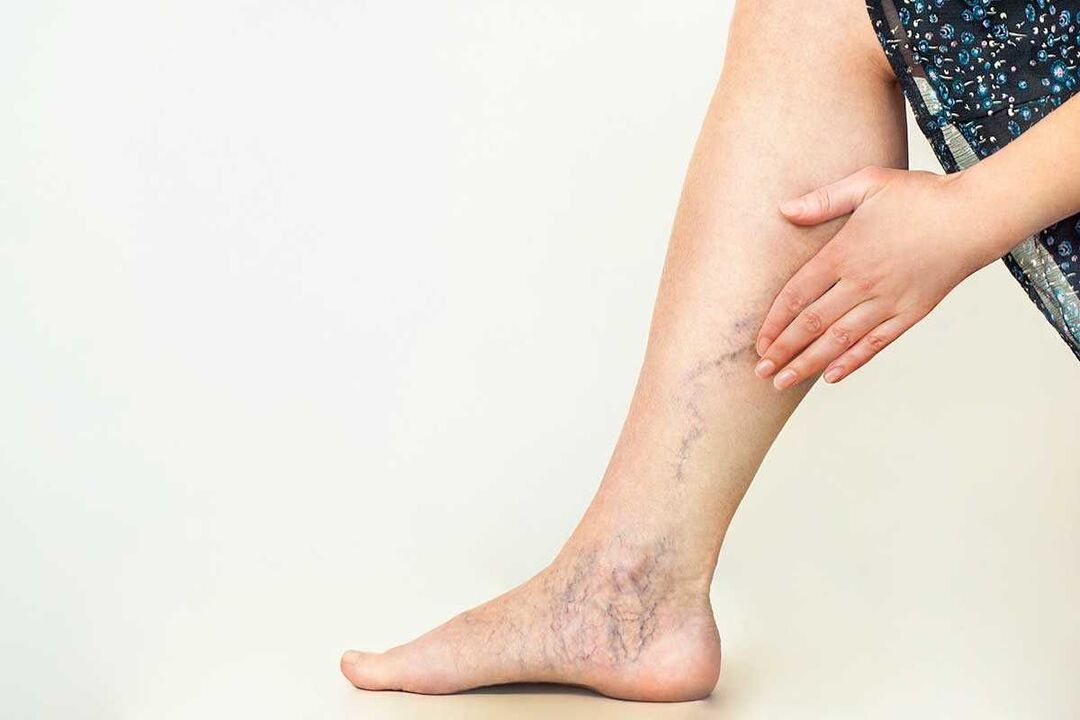
causes of varicose veins
- Missing, defective or damaged venous valves - the reverse flow of blood back into the legs is disturbed and blood stagnates and stretches in the veins;
- Often maintain an upright posture - Varicose veins are most common among barbers, teachers, salesmen and other people who spend a lot of money;
- Overweight and Obesity – Excess weight puts pressure on the lower limbs, causing the veins to dilate and cause varicose veins;
- Intestinal diseases, constipation - produces intra-abdominal pressure, leading to varicose veins;
- flatfoot;
- Pregnancy - the uterus and fetus put extra pressure on the legs, causing varicose veins;
- Lifting weights - Excessive physical activity can cause veins to dilate and blood vessel walls to stretch;
- Professional sports - running, jumping, tennis - can lead to varicose veins due to constant pressure on the lower limbs.
symptom
If the condition progresses, the following symptoms may occur
- rapid fatigue;
- Feeling of heaviness in lower limbs;
- Calf muscle cramps (most often in the evening and at night);
- There is a tingling, numb feeling in the legs.
Symptoms of nutritional disorders
- Thickening of vein walls;
- Skin pigmentation occurs in certain places;
- skin atrophy;
- Dermatitis is a disease characterized by inflammation of the skin;
- In later stages of the disease, trophic ulcers may progress, which are virtually untreatable.
Varicose veins in male legs
- Occupational characteristics - not actively working, maintaining one posture for a long time, working while standing, lifting weights;
- excess weight;
- Fats and unhealthy foods that negatively affect blood vessel walls;
- Liver diseases: hepatitis and cirrhosis;
- Metabolic diseases, diabetes;
- Active sports, bodybuilding, and strenuous physical activities;
- arterial hypertension;
- genetic factors;
- Smoking and drinking.
Leg ulcers caused by varicose veins
Symptoms of varicose veins in legs
- Stage 1 – Some cosmetic imperfections are apparent and the pain is actually not bothersome.
- Stage 2 - Feelings of heaviness, fullness, pain, and cramps during sleep.
- The third stage - edema formation, feeling of fullness, thickening of skin and subcutaneous tissue, formation of dark spots.
- Stage 4 - trophic ulcers, burning and itching, severe pain, protruding veins, changes in gait, difficulty walking.
- Heaviness and fatigue in the legs, cramping of the calf muscles during sleep and after waking;
- Dull pain in the calf, which worsens with prolonged standing and disappears when lying down;
- Burning and itching in the legs at night;
- Severe fatigue can occur with light loads and short distance walking.
complication
Varicose veins in the lower limbs can cause the following conditions:
- Hemorrhoids - a disease characterized by rectal varicose veins;
- Varicocele – Varicocele;
- Portal hypertension is a syndrome of elevated pressure in the portal venous system.
Treatment of varicose veins in legs
hardening
phlebectomy
intravascular laser coagulation
Conservative treatment
- Venoconstriction
- anticoagulant
- Anti-edema therapy
- decomposer
- during nutritional changes
- Antioxidants
- nonsteroidal analgesics;
- fibrinolytics
Laser treatment of varicose veins
- Outpatient treatment – patients do not need to be hospitalized and can go home immediately after surgery;
- Use local anesthesia - no need for general or spinal anesthesia;
- Short procedure duration - laser treatment takes only 60-90 minutes to complete, after which the patient can go home;
- Long-lasting cosmetic results - after using laser to remove varicose veins, no traces are left on the skin; sometimes a strip of dark skin may appear, which disappears after 2-3 months.
radiofrequency coagulation
- Intravenous supplements are medications that have a positive effect on the vein walls and have a tonic effect. They come in different forms (ointments, gels, tablets);
- Antihistamines - block histamine receptors;
- Antibiotics – stop and control the inflammatory process in the body.

















